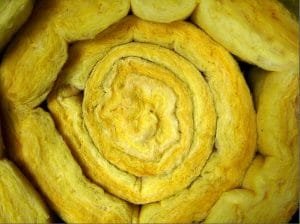Choosing Home Insulation: Pros/Cons & Costs

Here’s a breakdown of the most common types.
Choosing Home Insulation: Pros & Cons & Costs – Estimated Price CAD/sq ft)
Types of Home Insulation: Pros, Cons, and Costs
Choosing insulation comes down to budget, climate, and how your home is built. Some materials are better for attics. Others work well in walls or basements. Here’s a breakdown of the most common types.
| Type | Estimated Price (CAD/sq ft) | Benefits | Ease of Installation | Pros | Cons |
|---|---|---|---|---|---|
| Fiberglass Batts | $0.50–$1.50 | Cheap and widely available | Moderate (DIY possible with care) | Affordable. Readily available. Fire-resistant. | Itchy to handle. Loses performance if compressed or wet. |
| Blown-In Cellulose | $1.00–$2.00 | Good for tight spaces and retrofits | Moderate (needs blower machine) | Made from recycled paper. Good air sealing. | Can settle over time. Prone to moisture damage. |
| Spray Foam (Closed Cell) | $3.00–$6.00 | High insulation value per inch | Hard (professional only) | Great air barrier. Moisture resistant. Adds structural strength. | Expensive. Can off-gas during installation. |
| Rigid Foam Boards | $1.50–$3.00 | High R-value per inch | Moderate (cut and fit required) | Good for basements and exterior walls. Moisture resistant. | Joints need sealing. UV-sensitive if exposed. |
| Mineral Wool (Rockwool) | $1.00–$2.00 | Fire and water resistant | Moderate (DIY possible) | Soundproofing. Doesn’t absorb water. Fireproof. | Heavier than fiberglass. More expensive. |
| Reflective or Radiant Barrier | $0.25–$0.75 | Reflects radiant heat | Easy (staple in place) | Good for hot climates. Works well in attics. | Not effective in cold climates. Only works against radiant heat. |
| Denim (Recycled Cotton) | $1.50–$2.50 | Eco-friendly | Moderate (similar to fiberglass) | Made from recycled jeans. No itch factor. | Higher cost. Lower availability. |
Quick Notes Before You Choose
- For DIYers on a budget: Fiberglass batts and blown-in cellulose are common picks.
- For long-term energy savings: Spray foam and rigid boards offer better air sealing.
- For eco-minded renovations: Denim or cellulose insulation uses recycled content.
Check your local building codes before starting. Some insulation types need a vapor barrier or fire protection layer.
Keep in mind. Some materials are better for attics. Others work well in walls or basements.
Benefits
Insulating your home offers numerous benefits. Your home will be less drafty, but there’s much more to it.
1. Lower Energy Bills
Insulation helps maintain the temperature inside your home, reducing the need for winter heating and summer cooling. This results in significantly lower energy bills, as your heating and cooling systems won’t have to work as hard to keep your home comfortable. Make sure you get the proper type of insulation for each area. And there are more choices than ever. Check Explaining Insulation and R-Value.
2. Increased Comfort
Proper insulation ensures that your home maintains a more consistent temperature, reducing cold drafts in winter and keeping the heat at bay in summer. This makes your living space more comfortable year-round, regardless of the weather outside.
3. Environmental Impact
By using less energy to heat and cool your home, insulation reduces your carbon footprint. This is a key step in making your home more eco-friendly, as it lowers greenhouse gas emissions and contributes to overall energy conservation.
4. Soundproofing
Insulation acts as a barrier to sound, helping to reduce noise from the outside as well as between rooms. This can enhance your home’s peacefulness, making it quieter and more serene.
5. Increased Property Value
An insulated home is more energy-efficient, making it more attractive to potential buyers. Improved insulation is often seen as a valuable upgrade, boosting your home’s marketability and potentially increasing its resale value.
I have been warned about diminishing returns if you go overboard. The best return on investment is attic insulation.
See – Natural Insulation
